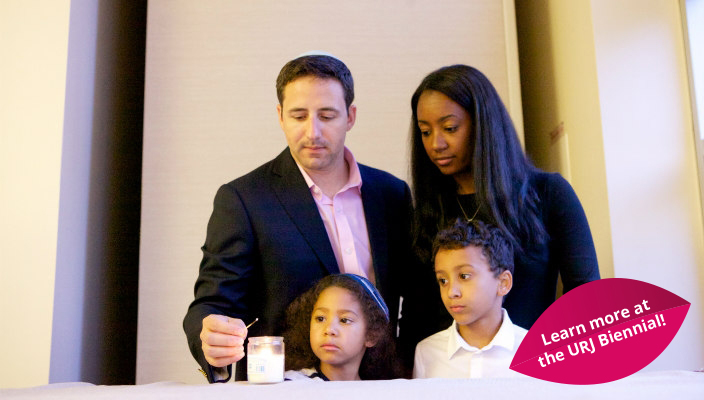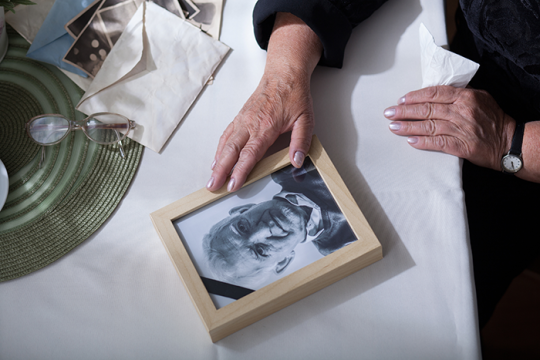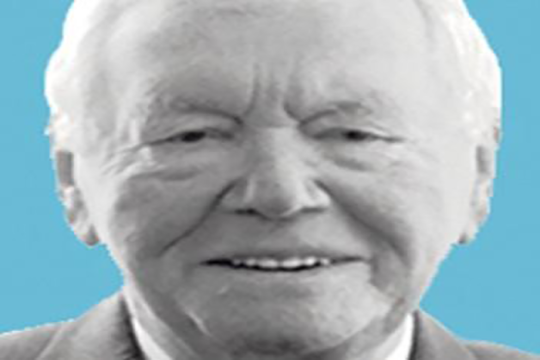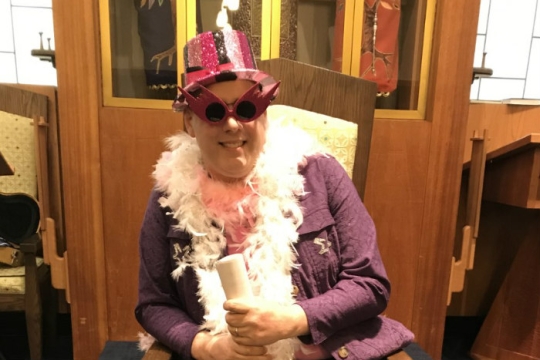
Throughout the course of 12 years, Temple Shalom in Succasunna, N.J., experienced a number of hardships, ranging from financial difficulties to a decline in membership. As it turned out, though, the thing that would inspire this community to thrive once again was, well, the very community itself.
Saving the Synagogue with a Creative Initiative
Dinah Fox, one of Temple Shalom’s long-standing members, led the effort to save Succasunna’s beloved synagogue, thinking up a smart, meaningful idea to engage with the community that ultimately saved the congregation from shutting its doors and earned it a URJ Belin Award. Her idea? Special services honoring the (death anniversary) of community members’ loved ones through the telling of personal and heartfelt stories.
As soon as her initiative was approved by temple’s president, Jeff Newman, and Rabbi Inna Serebro-Litvak, Fox hit the ground running. Along with other temple volunteers, she reached out to members to ask if they’d be interested in sharing a story about a loved one on the Shabbat of that loved one’s yahrzeit. The result was overwhelmingly positive and heartwarming, with many members coming forward to share yahrzeit stories with their beloved community.
Remembering Loved Ones Lost
“One of our members, Lee Dornfeld, invited 40+ family members to the Shabbat service where he spoke about his mother, who was forced to escape Austria on the KinderTransport,” Fox says. “He graciously offered to sponsor the oneg, given that he was adding a large group to the service.”
Dornfeld has two sons, one in New Jersey and another in Utah; the latter surprised Dornfeld by flying into town to hear him honor his grandmother’s yahrzeit.
Fox also remembers a special moment during the service in which she honored her own father on his yahrzeit.
“When my husband went up to the bimah to read a portion of the service,” she recalls, “he invited [my grandson] Adam to join him at the pulpit. My 2-and-a-half-year-old granddaughter took it upon herself to run up to the bimah and join her brother and grandfather – a beautiful, intergenerational sight!”
For Newman, who delivered a speech of his own, the experience was both personally fulfilling and beautiful for the community at large.
“After speaking about my father, who passed away 50 years ago, when I was only a teenager, several congregants were in tears, and afterward, at least eight people approached me to share their own stories,” Newman says. “Without question, the overall experience has brought me closer to so many people, and it has opened the gateway to talk about other personal issues that otherwise I would have felt uncomfortable to discuss.”
Bringing Disconnected Members Back into the Fold
This closeness also inspired members on the verge of leaving to stay connected to the community. One member, Geta Vogel, was about to resign from the synagogue because, despite having been a member for 30 years, she no longer felt connected. When she was invited to speak, though – to honor the aunt who raised her after her parents passed away when she was a young girl – she began to connect with other congregants.
“[Geta] not only decided to remain a member but happily chose to participate,” Fox says. “She now offers to be a greeter at services and make calls to invite other congregants to participate in Shabbat services. To us, this is a perfect example of re-engaging members and deepening their connections to the community.”
Replicating this Programming In Your Congregation
Fox is proud that this initiative addresses key tenets of the concept of audacious hospitality. Members from a diversity of backgrounds were invited to participate, to share lessons about difficult life challenges, and to tell inspiring stories that prompted others set higher goals for themselves – all within a warm environment and with an openness for young children to participate.
Additionally, she says, this program is easily replicable by any congregation. “There is essentially no cost to this program,” Fox says to congregations wishing to create similar programming. “Any congregation, of any size, with or without a rabbi, can implement this initiative.”
Rabbi Serebro-Litvak sees this initiative as one of Temple Shalom’s many avenues of congregational engagement.
“Everything we do at Temple Shalom is a team effort between me, the executive committee, and our volunteers,” she says. “Our programs cater to people of all ages and interests, which has garnered great attendance and many new families joining our congregation over the last two years. We even held some of our summertime services in congregants’ houses so we could be together informally as a community and get to know each other better. With everything we do, including Dinah’s creative initiative to share loved ones’ yahrzeit stories, we are creating a truly warm community where each person feels a part of it.”
Rabbi Serebro-Litvak also credits the program’s success with the personal sense of connection infused throughout the entire process. “It’s not enough to just send out an email asking people to do this,” she says. “There has to be a personal outreach, which Dinah did with her group.
“And when people are brave enough to open up and show their emotions in front of the community, when you share sacred thoughts and emotions, it immediately establishes a sense of trust and closeness. It’s a very intimate feeling; they appreciate the task and they feel more connected to the person listening; it goes both ways.”
To learn more about Temple Shalom’s yahrzeit initiative, email Rabbi Inna Serebro-Litvak. Then, check out the other 2019 Belin Award-winning projects and the congregations that developed them.
Posters about each award-winning project will be on display at the URJ Biennial, the largest Jewish gathering in North America, held December 11-15, 2019, in Chicago, IL. Register now to join thousands of Jews from around the world to learn, pray, share ideas, dance and sing, hear from inspiring speakers, reunite with old friends, create new connections, and more.
Have something to say about this post? Join the conversation in The Tent, the communications and collaboration platform for congregational leaders of the Reform Movement. You can also tweet us or tell us how you feel on Facebook.
Related Posts

Chevrah Kadisha: Showing Love Until the Very End

Remembering Rabbi Dow Marmur z”l
